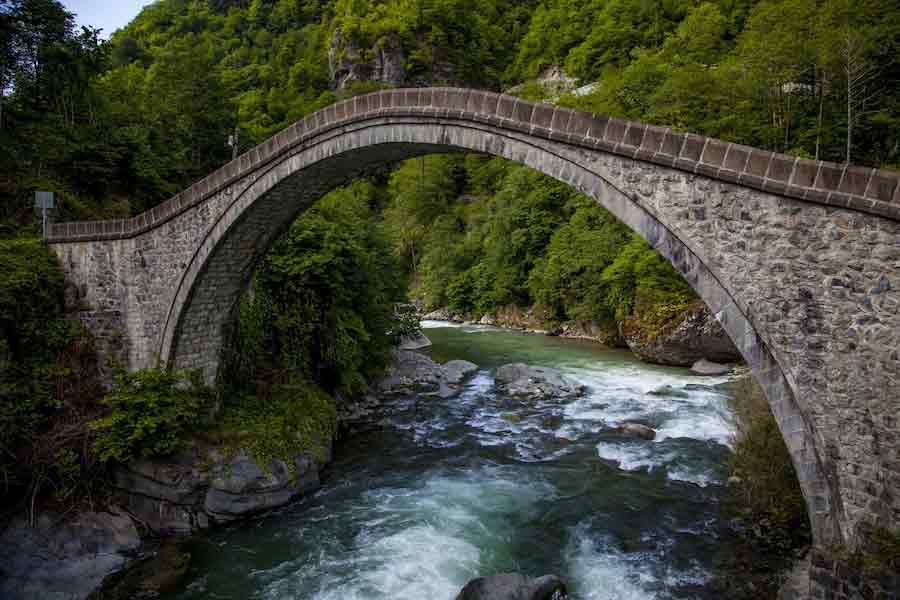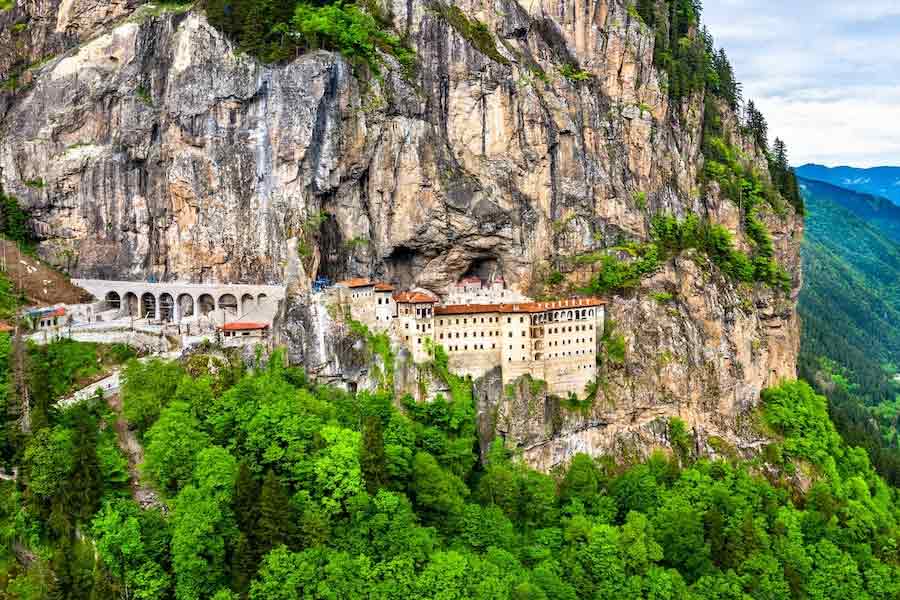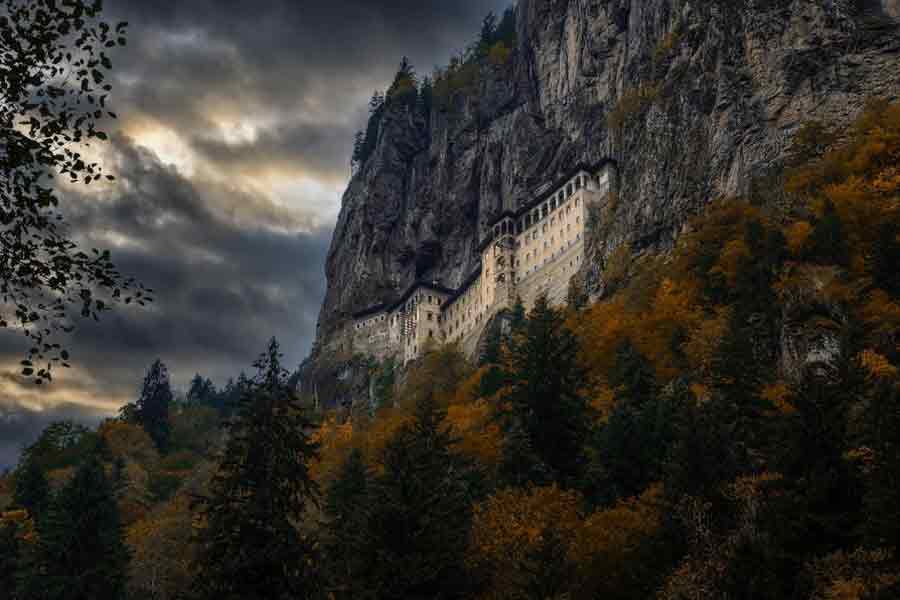Turkey's Black Sea region is not the most popular choice for foreign tourists who travel to Turkey. It is largely overshadowed by hotpots like Istanbul and Antalya, the two cities that comprise the largest percentage of Turkey's overall tourism.
Although local tourists primarily visit the Black Sea, it offers a wide range of fascinating sites and ineffably beautiful natural landmarks.
 There are several existing monasteries alongside the coast of Black Sea which are particularly suitable for cultural tourism. The newly-built Balgarevo monstery “St. Ekaterina” lies 10km away from the Kaliakra cape. The monastery “St.st. Constantine and Elena” is situated in the summer resort St.St. Constantine and Elena and the rock Aladzha monastery lies to the north of the famous Golden Sands resort.
There are several existing monasteries alongside the coast of Black Sea which are particularly suitable for cultural tourism. The newly-built Balgarevo monstery “St. Ekaterina” lies 10km away from the Kaliakra cape. The monastery “St.st. Constantine and Elena” is situated in the summer resort St.St. Constantine and Elena and the rock Aladzha monastery lies to the north of the famous Golden Sands resort.
Sümela Monastery: The Pearl of Turkey’s Black Sea Region
Sümela Monastery (Panagia Sumela in Greek) is a 1600-year-old Orthodox mountaintop monastery, built on the side of Karadağ Mountain, which is located in the Altındağ Valley of Trabzon’s Maçka district.
Currently included in UNESCO’s Tentative List of World Heritage Sites in Turkey, this religious complex is presumed to have been built in the 4th century AD during the reign of the Byzantine Emperor Theodosius I, by two priests named Barnabas and Sophronios who were natives to Athens, Greece.
Today, Sümela monastery is, perhaps, the most popular tourist attraction in Turkey’s Black Sea region. And with its amazingly well-preserved artistic frescoes and stunning architectural features and location, this magical site is deserving of its admiration.
Sümela Monastery is spread over a large area and consists of church buildings, chapels, rooms where once the monks lived, bathrooms, libraries that once hosted valuable ancient manuscripts, food cellars, a kitchen, and a section that was a natural spring with healing properties.
The etymology of the name "Sümela."
The most plausible theory about the root of the name "Sümela" suggests that the monastery got its name from the word "melas,” meaning "black" in Greek. This was the archaic name of Karadağ Mountain, upon which the monastery is built. Furthermore, "Stou Mela" means "the thing at Mela" in Greek. Therefore, it is suggested that the name "Stou Mela" has seemingly been shaped into "Sümela" over the centuries.
The Structure of the Sumela Monastery
 Among the sections of Sumela Monastery are the library, holy spring, student rooms, guest house, kitchen, chapel and bedrock church. The buildings are located on a large area. There is a large aqueduct on the slope where the water comes from. However, some parts of the arch are in ruins today. The monastery is entered by a narrow and long staircase. There are guard rooms right next to the entrance door. From this location, you can go down to the inner courtyard. The influence of Turkish art is also seen in the hearths, cells and cabinets of the rooms of the buildings surrounding the courtyard. The outer and inner walls of the rock church and the adjoining chapel are filled with frescoes. Again in the inner courtyard III. There are frescoes from the Alexios period. The frescoes in the Sumela Monastery contain scenes from the Bible.
Among the sections of Sumela Monastery are the library, holy spring, student rooms, guest house, kitchen, chapel and bedrock church. The buildings are located on a large area. There is a large aqueduct on the slope where the water comes from. However, some parts of the arch are in ruins today. The monastery is entered by a narrow and long staircase. There are guard rooms right next to the entrance door. From this location, you can go down to the inner courtyard. The influence of Turkish art is also seen in the hearths, cells and cabinets of the rooms of the buildings surrounding the courtyard. The outer and inner walls of the rock church and the adjoining chapel are filled with frescoes. Again in the inner courtyard III. There are frescoes from the Alexios period. The frescoes in the Sumela Monastery contain scenes from the Bible.
Information for Visitors
Sümela Monastery can be visited from 9 am to 6.30 pm in the summer period (15 March-15 October) and from 10 am to 4 pm in winters (15 October-15 March). The monastery is closed on weekends. The entrance fee to the monastery is 50₺. Besides, you will be required to pay a fee of 10₺ to enter Altındağ National Park. The total price of 60₺ equals $8 or € 6.40 (December 2020 exchange rates).
The monastery is free to visit for Museum Pass owners. If you do not have a Museum Pass, which grants free access to all the museums in Turkey run by the Ministry of Culture and Tourism, click to find out more about it or purchase it online.
There might be unannounced, abrupt changes in the monastery's visiting hours and fees due to the COVID-19 pandemic. Before your visit, I would recommend you check the monastery's tourist information page from the official website of the Ministry of Culture and Tourism of Turkey.






